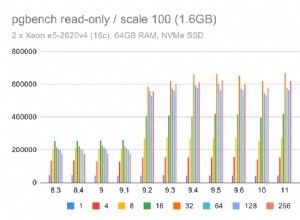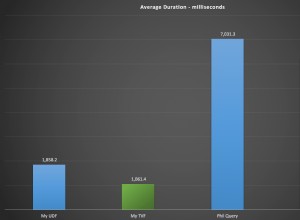Wygląda na to (dla tej społeczności i ponieważ nie mogłem znaleźć żadnych przykładów procedur składowanych używających zestawów wyników z innych procedur składowanych jako tabel w nowych wybranych tabelach), że mysql albo tego nie obsługuje, albo że jest śmiesznie trudno zrobić to, co ja mam nadzieję zrobić.
Więc zamiast wywoływać procedury składowane, skopiowałem zapytania do tej końcowej procedury.
DELIMITER $$
CREATE DEFINER=`root`@`localhost` PROCEDURE `get_team_stats_change`(
IN team_id INT
)
BEGIN
SELECT SUM(start_weight) AS start_weight,
SUM(start_body_fat) AS start_body_fat,
SUM(current_weight) AS current_weight,
SUM(current_body_fat) AS current_body_fat,
SUM(weight_change) AS weight_change,
SUM(body_fat_change) AS body_fat_change FROM (
SELECT ls.person_id,
fs.weight AS start_weight, fs.body_fat AS start_body_fat,
ls.weight AS current_weight, ls.body_fat AS current_body_fat,
fs.weight - ls.weight AS weight_change, fs.body_fat - ls.body_fat AS body_fat_change
FROM
(SELECT ttd.person_id, bs.weight, bs.body_fat, bs.test_date
FROM body_stats AS bs
JOIN
((SELECT pbs.person_id, min(bs.test_date) AS first_test, max(bs.test_date) AS last_test
FROM body_stats AS bs,
person_body_stats AS pbs,
team_member AS tm,
team AS t
WHERE t.team_id = team_id
AND tm.team_id = t.team_id
AND tm.person_id = pbs.person_id
AND pbs.body_stats_id = bs.body_stats_id
AND tm.start_date bs.test_date
AND bs.test_date >= t.starting_date
GROUP BY person_id) AS ttd,
person_body_stats AS pbs)
ON bs.test_date = ttd.first_test
AND pbs.person_id = ttd.person_id
AND pbs.body_stats_id = bs.body_stats_id) AS fs,
(SELECT ttd.person_id, bs.weight, bs.body_fat, bs.test_date
FROM body_stats AS bs
JOIN
((SELECT pbs.person_id, min(bs.test_date) AS first_test, max(bs.test_date) AS last_test
FROM body_stats AS bs,
person_body_stats AS pbs,
team_member AS tm,
team AS t
WHERE t.team_id = team_id
AND tm.team_id = t.team_id
AND tm.person_id = pbs.person_id
AND pbs.body_stats_id = bs.body_stats_id
AND tm.start_date bs.test_date
AND bs.test_date >= t.starting_date
GROUP BY person_id) AS ttd,
person_body_stats AS pbs)
ON bs.test_date = ttd.last_test
AND pbs.person_id = ttd.person_id
AND pbs.body_stats_id = bs.body_stats_id) AS ls
WHERE ls.person_id = fs.person_id
) AS delta;
END




